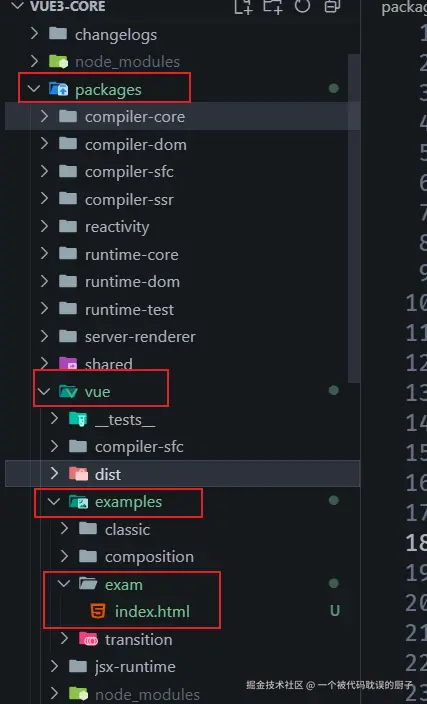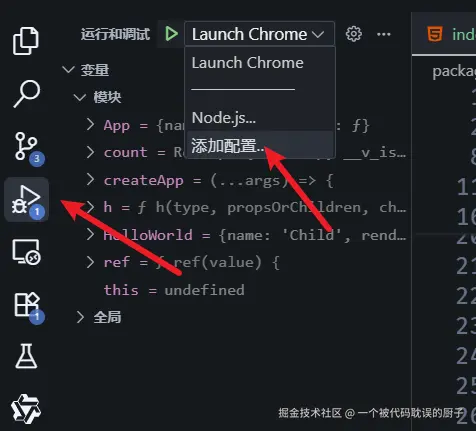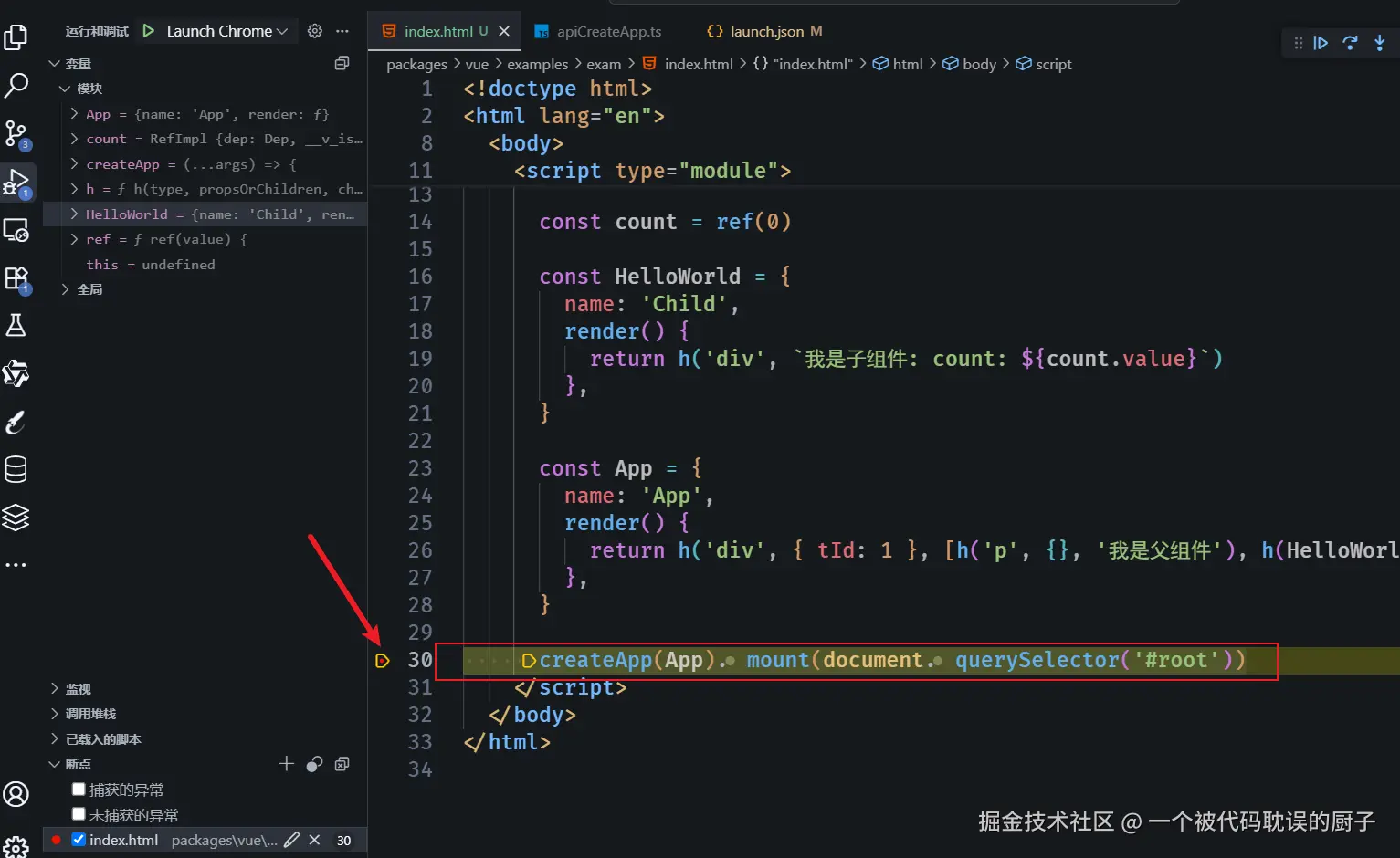本文目的是为探究vue初始化时的挂载流程,主要包括如下核心问题:
- 渲染器的创建
- vnode的创建
- vnode的渲染
环境准备
- 克隆
vuejs/core到本地:git clone https://github.com/vuejs/core.git - pnpm i安装依赖==> pnpm run dev-esm打一个
runtime的包==>打出来的包在packages/vue/dist/vue.runtime.esm-bundler.js,并且生成了sourceMap便于调试 - 创建test文件,文件位置如下:

html
<!doctype html>
<html lang="en">
<head>
<meta charset="UTF-8" />
<meta name="viewport" content="width=device-width, initial-scale=1.0" />
<title>Document</title>
</head>
<body>
<div id="root"></div>
<script type="module">
import { h, ref, createApp } from '../../dist/vue.runtime.esm-bundler.js'
const count = ref(0)
const HelloWorld = {
name: 'Child',
render() {
return h('div', `我是子组件: count: ${count.value}`)
},
}
const App = {
name: 'App',
render() {
return h('div', { tId: 1 }, [h('p', {}, '我是父组件'), h(HelloWorld)])
},
}
createApp(App).mount(document.querySelector('#root'))
</script>
</body>
</html>- 创建vscode的debugger文件,可进行本地调试

launch.json
{
"version": "0.2.0",
"configurations": [
{
"name": "Launch Chrome",
"request": "launch",
"type": "chrome",
"url": "http://127.0.0.1:5501/packages/vue/examples/exam/index.html",
"webRoot": "${workspaceFolder}"
}
]
}上述文件中的端口自行修改 ,我们打个断点,然后按F5就可以打开调试页面了。: 
源码看起来比较复杂,我是通过画思维导图来学习整体流程的。